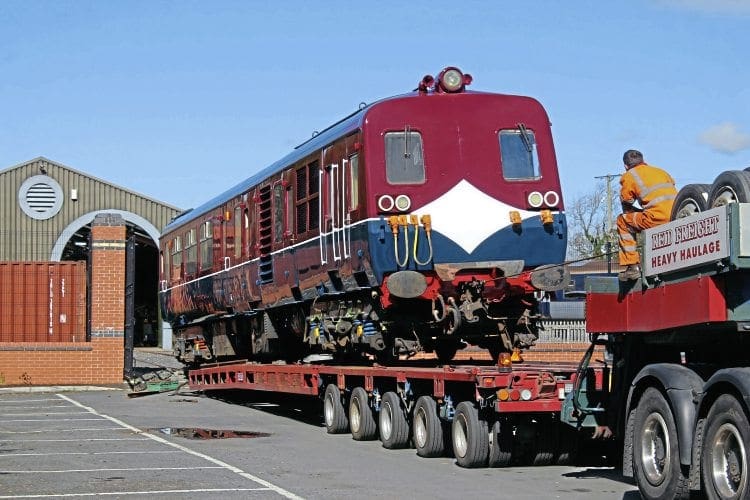
THE Downpatrick and County Down Railway (D&CDR) has taken delivery of the four Northern Ireland Railways 8080 Class DEMU vehicles it had earmarked for preservation. The transfer of each of the BREL Derby-built vehicles from Belfast York Road depot was carried out by road during the weekend of May 12/13.
Transferred on the 12th were Motor
Coach No. 8090 and Trailer No. 8752, while Nos. 8069 and 8749 were transferred the next day. After being safely unloaded, the vehicles were stabled at Downpatrick.
Before they enter service, the new arrivals will have an internal deep clean and other preparatory work while crew training will also be undertaken. It is understood that Nos. 8069 and 8749, which were subsequently formed into a two-car unit, will be the first of the class to be used on the heritage railway.
The appeal, which was launched by the D&CDR in early April to help finance the transportation and restoration of the vehicles (referred to as the “80 Class” in publicity material), had raised £12,500 by mid-May with £7,000 also being pledged by the Modern Railway Society of Ireland (MRSI).
The acquisition of the vehicles has been a positive outcome for the preservationists, who had planned to save examples of the unique DEMU type ever since the rolling withdrawal of the class began in 2006. The plans, however, were delayed due mainly to serviceable members of the class being utilised for Sandite duties, while three four-car units were used for passenger services as an interim measure between 2009 and 2011.
The need for NIR to retain any of the remaining members of the class ended last autumn when the company considered that the new Windhoff-built MPV was capable of handling future Sandite duties and therefore the dedicated four-car Sandite DEMU was no longer required as a backup for the MPV.
The first batch of the 80 Class fleet entered traffic in 1974-75, but none of the preserved examples are from that group. Three of the preserved examples are from the second batch delivered during 1977-78.
Read more in the July issue of Rail Express, on sale now.
Enjoy more Rail Express Magazine reading every month.
Click here to subscribe & save.




